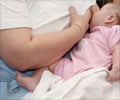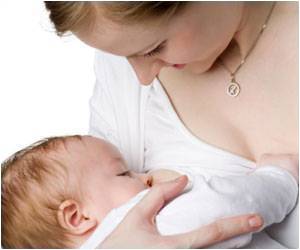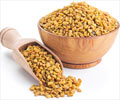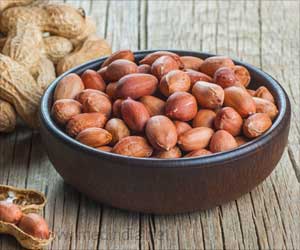Growth factors present in human breast milk, but not in formula, may explain the protection against intestinal damage due to necrotizing enterocolitis, found in a study published.

Driving this research is the quest to understand how human breast milk protects infants from NEC. Soluble growth factors found in breast milk, such as epidermal growth factor (EGF) and heparin-binding EGF-like growth factor (HB-EGF), are thought to be possible protective molecules. Although both EGF and HB-EGF primarily activate the EGF receptor (EGFR), a member of the ErbB receptor tyrosine kinase family, HB-EGF also activates ErbB4 receptors. "We have recently demonstrated that NRG4, an ErbB4-specific ligand that does not bind or activate other family members, specifically promotes survival but not migration or proliferation of mouse colon epithelial cells," says Dr. Frey. Thus, NRG4 is a potentially unique and selective target for new therapies.
Because there is no one experimental model that replicates human NEC, the investigators conducted a series of in vivo and in vitro experiments using different animal models as well as analysis of human breast milk and intestinal tissue. The results all suggest that NRG4-ErbB4 signaling may play a key role in protecting the developing intestine from inflammatory insults, says Dr. Frey.
Human NEC has been associated with the loss of Paneth cells in the ileum. Paneth cells are found throughout the small intestine and are thought to be important components in the defense of gland stem cells from microbial damage. The investigators showed that NRG4 blocked Paneth cell loss in experimental mouse NEC. "This suggests that protection of Paneth cells or Paneth cell progenitors may be part of the mechanism of protection against NEC," says Dr. Frey, though as yet the mechanisms by which ErbB4 could regulate Paneth cell survival are not well defined.
In final experiments, the researchers analyzed the whey fractions of human milk from six anonymous donors, as well as formula controls, to see whether NRG4 is present normally in breast milk. Western blot analysis showed that all six breast milk specimens were positive for NRG4, whereas NRG4 was not detected in formula control samples. The authors also demonstrated that ErbB4 receptors were present in neonatal human small intestine, including samples from infants who currently have or recently had NEC, supporting a functional role in the intestines.
Source-Eurekalert















